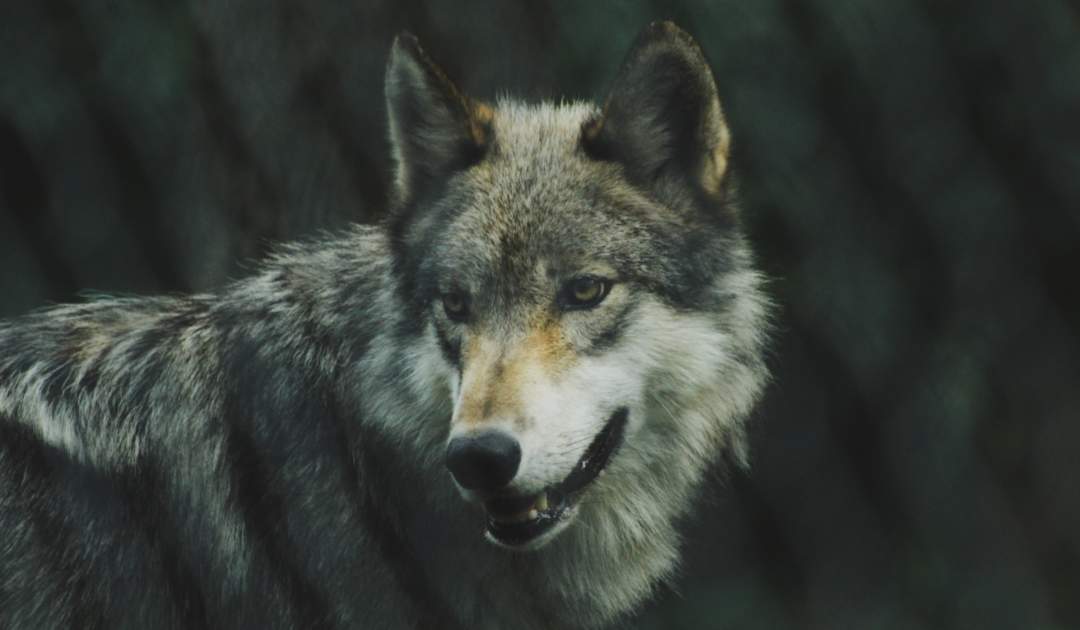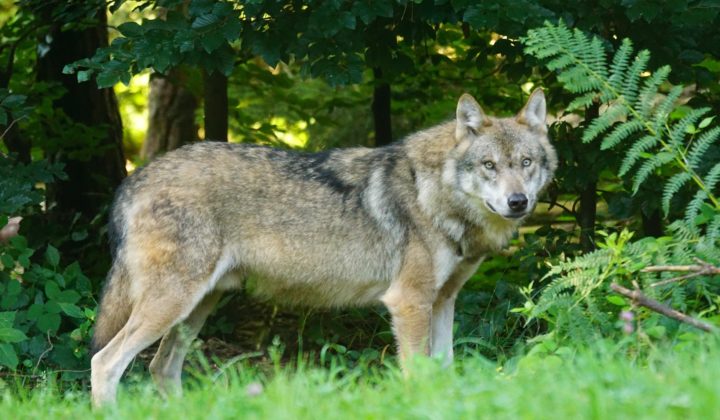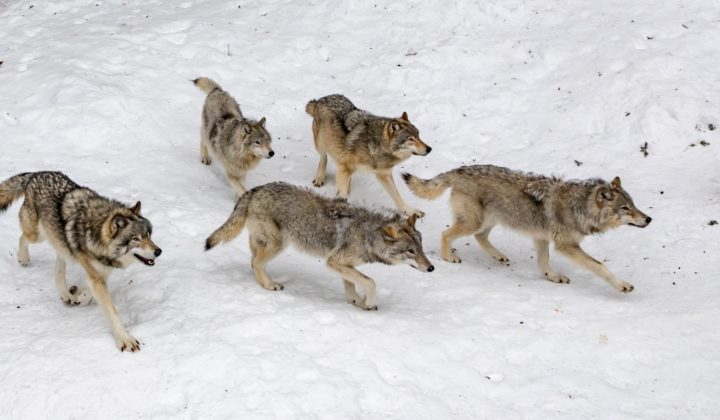Is the distinction between dog and wolf more difficult than would be the case with “normal” species, such as wolf and fox?
That’s right, you need a lot of experience and the appropriate analysis methods. There are now methods that are much more high-resolution and better suited to separating wolves and dogs. In the meantime, more and more complex methods from genome research are used in which large parts of the complete genome are analyzed. With this data as a basis and together with an international consortium, we have identified almost one hundred such locations in the genome at which wolves differ from dogs in general, regardless of their region of origin. We then investigate this if hybridization is suspected. With the help of this marker system, the hybridization up to the third or even fourth generation can be determined.
It is believed that the first wolves coming to Germany were hybrids. Would it have made its way in the genome if the first wolf to cross the border had been a hybrid?
With the methods mentioned, we would recognize if there were offspring of hybrids and wolves in Germany or if the first wolves that once immigrated to Saxony from Poland were already hybrids. Hybridization took place right at the beginning of the repopulation: In Saxony, a she-wolf mated with a German shepherd in 2003, two of the hybrid offspring were caught and placed in an enclosure, and over time all traces of the others were lost. We know for sure that they did not breed. If they did, we might really have a hybridization problem today. Since at that time the population was still very small, every hybridization can affect the entire future population.
Then why do these rumors still exist after they have long been refuted?
This is easy to explain: in some genetic testing methods, the genetic profiles are compared with those of reference populations to identify hybrids. If you take the first animals that were detected in Germany as reference wolf samples and define them as wolves, you might not be able to detect any traces of hybridization with domestic dogs in their offspring. The samples can be clearly identified as the reference “wolves” “assign. In order to avoid possible distortions of our results, we now rely on modern methods of genome research in which the selection of reference samples no longer plays a role. We know a sufficient number of places in the DNA where wolves and domestic dogs differ from one another regardless of their geographic origin. It doesn’t matter whether the wolves come from
Russia or Germany. We also look at functional characteristics that distinguish wolf and dog, such as the number of copies of the gene that codes for the enzyme amylase. This is used for starch digestion and is available in multiple copies in dogs, but only once in wolves. If the wolves in Germany were hybrids, the population would have to have numerous animals with multiple amylase copies in the genome. However, this is not the case, as studies on hundreds
of wolves in Germany in cooperation with the University of Veterinary Medicine in Vienna have shown.
Wasn’t hybridization also carried out specifically? Weren’t hybrids purposefully bred because they are more dangerous and also have no inhibitions against humans?
People’s fear is deliberately used in order to create a mood against a kind that is undesirable for some. The identical rumors exist in all regions where wolves are spreading again. In fact, experiments were carried out in the city of Perm, Russia, in which wolves were crossed in dog lines. The aim was to create superior working lines for military and police purposes. On the internet one reads again and again that German wolves are descendants of such hybrids. How and why these animals are supposed to have been brought thousands of kilometers to Germany is unfortunately never explained. It is also not about verifiable facts, after all we are all manipulated by chemtrails, etc. So, it’s obvious that our wolves are not really wolves at all. Someone always has spectacular secret knowledge and likes to share it online. The story can be pretty good, too, but unfortunately ultimately fictitious. There is also no evidence at all that wolf-dog hybrids are wilder, more disinhibited and more dangerous than dogs or wolves. Even if the wolves in Germany carried significant amounts of dog DNA, there is a high probability that they would behave like other wolves do. Current behavioral studies on hybrids in Tuscany suggest just that.
Are there any other methods besides genetic testing? So, if the wolf is now suspected of having attacked an animal, are you looking for footprints or something like that?
A seasoned expert can associate a good photo with wolf and dog feel safe. Even first-generation hybrids are often still capable; for longer only modern molecular genetics can help. Even in the case of a torn sheep, access to the causer does not depend solely on genetics. A loss of livestock is seen photographically and in logs on site, and that too is checked with the control of who is actually the cause of the tear. The genetics are of course important, but such a crack assessment is such a process. Like in a criminal case, genetics can refer to another clue, but we at Senckenberg do not convict a wolf or dog, it is dealt with in the responsible government administration of all rights.
What else is actually examined using wolf samples or wolf carcasses that have been involved in an accident?
The wolf samples are scientifically examined very thoroughly by various institutions. When a wolf lies dead on the roadside, it comes to the Leibniz Institute for Zoo and Wildlife Research in Berlin and is carefully examined for the cause of death and the diseases and pathogens present. If possible, the skull comes to Hermann Ansorge at the Senckenberg-Institut in Görlitz for a morphological examination, and of course we in Gelnhausen receive a DNA sample. If feces are found, part of the sample often comes to Görlitz and is examined there for food components. Hair and bone remnants in the excrement are examined to determine whether the wolf has eaten red deer, roe deer, wild boar or farm animals. Therefore, one knows exactly which food spectrum wolves have in Germany.
Especially on social media, one reads claims again and again that Senckenberg is not neutral in the investigation and cooperates with “wolf-friendly” organizations like NABU. What are you thoughts on these claims?
The Senckenberg Society for Nature Research is an independent institution whose purpose is to conduct nature research. There are no connections whatsoever to nature conservation associations such as NABU with regard to investigations on wolves. The financing of the samples and the commissioning runs exclusively through the responsible state authorities. We don’t examine wolf samples on behalf of nature conservation organizations such as NABU or WWF. We work according to the standards of good scientific practice, as they are generally binding for Senckenberg as a member of the Leibniz Association.


